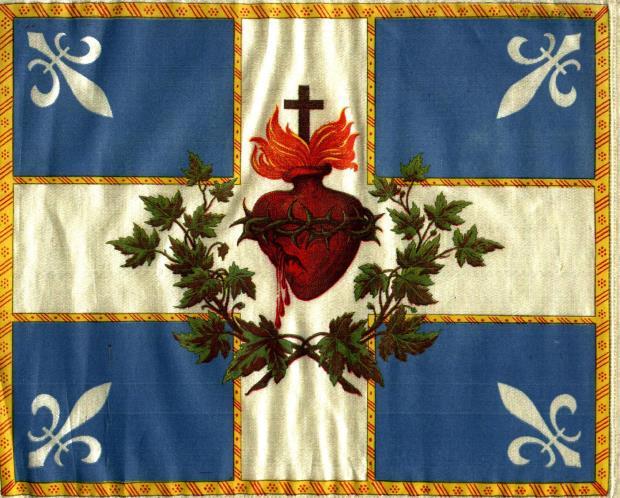The Québec Flag History

Adopted by the Government of Québec in 1948, the Québec flag pays tribute to the French roots of much of the province’s population. In Québec it’s called the fleurdelisé, meaning “with the fleur-de-lis.” Let’s take a look at its history, symbols, and how it came to be under the French Regime and British Regime.
What Does the Québec Flag Symbolize?
The fleurdelisé is a rich combination of symbols.
- The fleur-de-lis: The French kings started claiming the fleur-de-lis in the Middle Ages, putting it on their coats-of-arms and sceptres. Although lis is the French word for “lily,” the flower is actually in the iris family—it’s called yellow flag in English. Such “lilies” were on the crosses Jacques Cartier planted in Gaspé Bay in 1534 and Stadacona (Québec City) in 1536 to claim the land for Francis I. Roman Catholic tradition has also associated the fleur-de-lis with the Virgin Mary.
- The white cross: The white cross made its first appearance during the Crusades and came to represent France during the Hundred Years’ War in opposition to England’s red one. The blue flag with a white cross was adopted by the French Merchant Marine around 1535, and Samuel de Champlain tells us it was still around in the early 17th century. The French Royal Army used it too.
- The colour blue: The Virgin Mary traditionally wears a blue mantle, and Saint Martin of Tours, patron saint of the Kingdom of the Franks, had a celebrated blue cloak that the Franks preserved and venerated as a holy relic.
The History of the French Canadian Flag
The British Regime
New France was conquered by the British in 1763, and French ensigns gave way to the Union Jack—a combination of the English Cross of Saint George, the Scottish Cross of Saint Andrew and, starting in 1801, the Irish Cross of Saint Patrick. But to go with the Union Jack, which continued to fly atop Canadian poles until well into the 20th century, French Canadians were agitating to get a flag of their own. The Patriots committees adopted a red, white, and green flag in 1832, but it was dropped after it became tainted through its association with the Lower Canada Rebellion of 1837 and 1838. When the French warship La Capricieuse visited in 1855, ecstatic crowds waved the French tricolour and the blue, white, and red was embraced by one and all. The mood was set for the Acadian National Convention to choose the flag that still represents Acadians today.
Ancestor of the Fleur-de-Lis
More ideas for flags sprouted up in the province early in the 20th century. Among them was a proposal from Elphège Filiatrault, a parish priest in Saint-Jude. He called it the Carillon. It was based on a banner that came to light in 1848, thought to have been flown in 1758 at the Battle of Carillon, a famous French victory over the British. To the lilies pointing towards the centre against the blue background, Filiatrault added the white cross used earlier by the Royal Navy. A variant of the Carillon with a Sacred Heart in the middle was very popular for decades.
The Adoption of the Fleur-de-Lis
In the 1940s a number of organizations got to work on a campaign to promote the Carillon fleurdelisé flag. The pressure was heightened in 1947 by Legislative Assembly member René Chaloult’s motion calling on the provincial government of Maurice Duplessis to give Québec a flag of its own. It all came to a head on January 21, 1948, when Duplessis announced to parliament that the fleurdelisé was Québec’s new flag, by order in council, although the fleur-de-lis would point upwards in accordance with heraldic principles. An act was passed two years later enshrining the decision in law.








